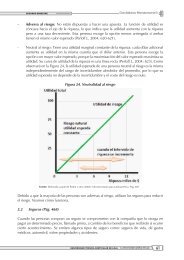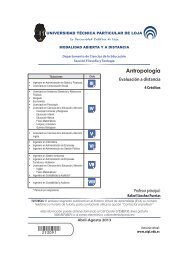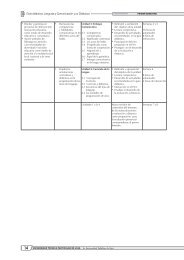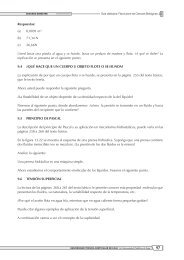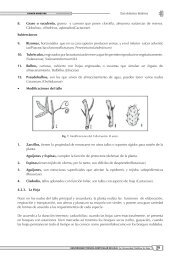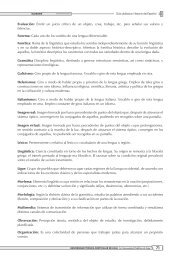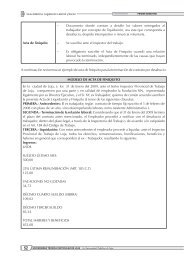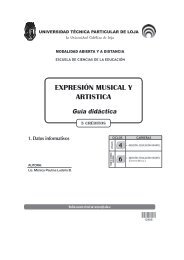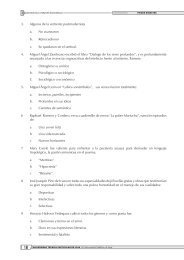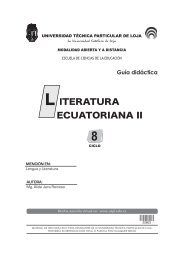Communicative Grammar III - Bad Request - Universidad Técnica ...
Communicative Grammar III - Bad Request - Universidad Técnica ...
Communicative Grammar III - Bad Request - Universidad Técnica ...
Create successful ePaper yourself
Turn your PDF publications into a flip-book with our unique Google optimized e-Paper software.
Exercise:<br />
Guía didáctica: <strong>Communicative</strong> <strong>Grammar</strong> <strong>III</strong><br />
What’s the kickboxing workout good for?<br />
_______________________________________________________________<br />
How often should you do it to get fast results?<br />
_______________________________________________________________<br />
Which two exercises are explained?<br />
_______________________________________________________________<br />
Which one is a strong punch?<br />
_______________________________________________________________<br />
What is the power kick?<br />
_______________________________________________________________<br />
Once you complete the exercise above look at the charts in the section “<strong>Grammar</strong> Presentation” in your<br />
textbook. You will see the structure of affirmative and negative imperatives. Then read the “<strong>Grammar</strong><br />
Notes” section in which you will learn about the uses of the imperative.<br />
Let me tell you that this structure is easy to understand. Now you can begin to work on the “Focused<br />
Practice” and “Communication Practice” sections in your textbook. These activities will help you<br />
understand what you learned in this topic.<br />
You have studied two topics so far. I hope everything is clear. Remember, if you have any questions<br />
please contact me. If everything is clear, you can continue.<br />
1.3 Simple Past<br />
This topic focuses on the meanings and uses of the simple past. It covers the simple past of the verb<br />
“to be” and regular and irregular verbs. Do you know when to use the simple past? You will learn this by<br />
understanding the information and doing the exercises in this part.<br />
Do you know who Basho is? If you want to know, you need to read his biography in the section “<strong>Grammar</strong><br />
in Context” in your textbook. You can do the activities “Before you Read” and “After you Read” which are<br />
based on this interesting biography.<br />
Before we continue please read the following cultural note:<br />
CULTURAL NOTE<br />
“Haiku is a traditional form of Japanese poetry, popular since the 17 th century.<br />
It is a three-line poem of usually seventeen syllables in lines of five, seven, and<br />
five syllables each. It traditionally focuses on images of the natural world.” Tiberio<br />
(2006)<br />
Interesting, isn’t it? You have read the “<strong>Grammar</strong> in Context” section, now it’s time to work on the following<br />
Exercise:<br />
UNIVERSIDAD TÉCNICA PARTICULAR DE LOJA La <strong>Universidad</strong> Católica de Loja 16



